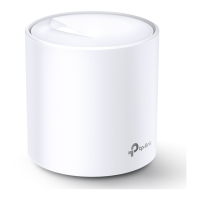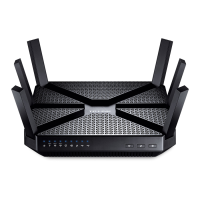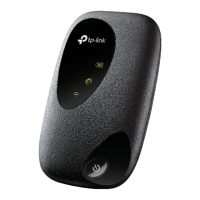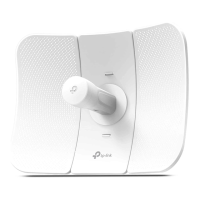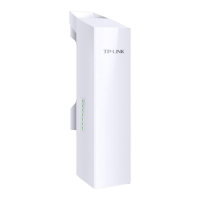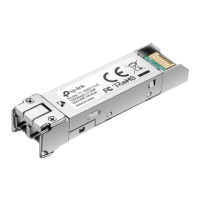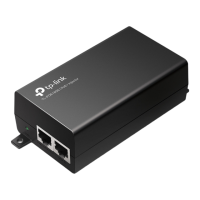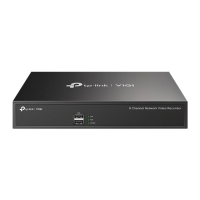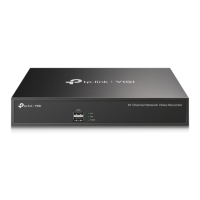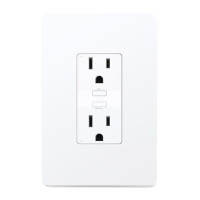Do you have a question about the TP-Link DECO X68 and is the answer not in the manual?
Explains conventions used in the guide.
Provides disclaimers on performance, features, and compatibility.
Explains the meaning of different LED light colors and patterns.
Describes the function of Ethernet ports, power slot, and reset button.
Guides on obtaining and installing the Deco mobile application.
Instructions for signing into or creating a TP-Link account.
Process of selecting the specific Deco model.
Steps for connecting the Deco unit to the modem.
Assigning a physical location to the Deco unit.
Configuring the internet connection type.
Setting up the Wi-Fi network name and password.
Connecting devices to the new Deco Wi-Fi network.
Confirmation of successful Deco network setup.
Instructions to initiate adding a Deco from the overview screen.
Choosing the Deco model for expansion.
Locating newly added Deco units.
Accessing the network status overview.
Navigating to the HomeShield section for security features.
Accessing additional router settings and features.
Viewing the operational status of all connected Deco units.
Accessing specific information for a single Deco unit.
Modifying the assigned location of a Deco unit.
Viewing detailed information about connected devices.
Adjusting settings for individual connected devices.
Creating profiles for family members and assigning devices.
Method for creating a new network via the overview screen.
General guidance on completing network creation steps.
Alternative method to create a new network from the menu.
Steps to finalize the new network creation process.
Finding all devices linked to the current Wi-Fi network.
Detecting and analyzing potential network security risks.
Accessing the status of all Deco units.
Navigating to the detailed view of a specific Deco unit.
Performing actions to remove or restart a Deco unit.
Defines the purpose and features of TP-Link HomeShield.
Guidance on utilizing HomeShield features and upgrading to Pro.
Details of various HomeShield functionalities like Parental Controls and QoS.
Changing network name and password for the primary network.
Setting up a separate network for guests.
Using device shake gesture to share network details.
Adding specific devices to the network blacklist.
Reviewing and removing devices from the blacklist.
Instructions to update the Deco firmware.
Advice for resolving issues during firmware updates.
Manages IPv4, IPv6, and firewall settings.
Configures LAN IP, DHCP server, and IPTV/VLAN.
Enables MAC cloning and reserves IP addresses for devices.
Sets up port forwarding and DDNS for external access.
Configures SIP ALG and UPnP for network applications.
Enables Fast Roaming and Beamforming for Wi-Fi.
Manages Deco LED indicator lights and night mode.
Selects operating mode and configures connection/app notifications.
Using WPS to connect devices easily.
Accessing and reviewing network usage and security reports.
Configuring the generation of reports.
Inviting users to manage the network.
Defining access levels for network managers.
Managing or revoking manager access.
Solutions for common connectivity and setup problems.
Guidance for resolving issues with the Deco app.
Advice on optimal placement for Deco units.
Regulatory compliance details for FCC.
Information on RF exposure compliance.
Regulatory compliance for Canada.
Warning statements specific to Korean regulations.
Notices related to NCC and BSMI standards.
General safety guidelines for using the product.
Explains symbols found on the product label.
Details on electronic waste recycling.
Lists essential safety measures for device operation.
Table detailing restricted substances in components.
Ukrainian certification compliance statement.
Detailed explanation of various product label symbols.
Guidance on recycling the product according to WEEE directive.
Explains conventions used in the guide.
Provides disclaimers on performance, features, and compatibility.
Explains the meaning of different LED light colors and patterns.
Describes the function of Ethernet ports, power slot, and reset button.
Guides on obtaining and installing the Deco mobile application.
Instructions for signing into or creating a TP-Link account.
Process of selecting the specific Deco model.
Steps for connecting the Deco unit to the modem.
Assigning a physical location to the Deco unit.
Configuring the internet connection type.
Setting up the Wi-Fi network name and password.
Connecting devices to the new Deco Wi-Fi network.
Confirmation of successful Deco network setup.
Instructions to initiate adding a Deco from the overview screen.
Choosing the Deco model for expansion.
Locating newly added Deco units.
Accessing the network status overview.
Navigating to the HomeShield section for security features.
Accessing additional router settings and features.
Viewing the operational status of all connected Deco units.
Accessing specific information for a single Deco unit.
Modifying the assigned location of a Deco unit.
Viewing detailed information about connected devices.
Adjusting settings for individual connected devices.
Creating profiles for family members and assigning devices.
Method for creating a new network via the overview screen.
General guidance on completing network creation steps.
Alternative method to create a new network from the menu.
Steps to finalize the new network creation process.
Finding all devices linked to the current Wi-Fi network.
Detecting and analyzing potential network security risks.
Accessing the status of all Deco units.
Navigating to the detailed view of a specific Deco unit.
Performing actions to remove or restart a Deco unit.
Defines the purpose and features of TP-Link HomeShield.
Guidance on utilizing HomeShield features and upgrading to Pro.
Details of various HomeShield functionalities like Parental Controls and QoS.
Changing network name and password for the primary network.
Setting up a separate network for guests.
Using device shake gesture to share network details.
Adding specific devices to the network blacklist.
Reviewing and removing devices from the blacklist.
Instructions to update the Deco firmware.
Advice for resolving issues during firmware updates.
Manages IPv4, IPv6, and firewall settings.
Configures LAN IP, DHCP server, and IPTV/VLAN.
Enables MAC cloning and reserves IP addresses for devices.
Sets up port forwarding and DDNS for external access.
Configures SIP ALG and UPnP for network applications.
Enables Fast Roaming and Beamforming for Wi-Fi.
Manages Deco LED indicator lights and night mode.
Selects operating mode and configures connection/app notifications.
Using WPS to connect devices easily.
Accessing and reviewing network usage and security reports.
Configuring the generation of reports.
Inviting users to manage the network.
Defining access levels for network managers.
Managing or revoking manager access.
Solutions for common connectivity and setup problems.
Guidance for resolving issues with the Deco app.
Advice on optimal placement for Deco units.
Regulatory compliance details for FCC.
Information on RF exposure compliance.
Regulatory compliance for Canada.
Warning statements specific to Korean regulations.
Notices related to NCC and BSMI standards.
General safety guidelines for using the product.
Explains symbols found on the product label.
Details on electronic waste recycling.
Lists essential safety measures for device operation.
Table detailing restricted substances in components.
Ukrainian certification compliance statement.
Detailed explanation of various product label symbols.
Guidance on recycling the product according to WEEE directive.
| Antenna type | Internal |
|---|---|
| Reset button | Yes |
| Certification | FCC, IC, RCM, JPA, JRF, VCCI |
| Product color | White |
| LED indicators | Power |
| Transmit power | CE: \u003C20 dBm (2.4 GHz) \u003C23 dBm (5 GHz); FCC: \u003C30 dBm (2.4 GHz) \u003C30 dBm (5 GHz) dBmW |
| Antennas quantity | 5 |
| Storage temperature (T-T) | -40 - 70 °C |
| Number of devices supported | 150 |
| Operating temperature (T-T) | 0 - 40 °C |
| Storage relative humidity (H-H) | 5 - 90 % |
| Operating relative humidity (H-H) | 10 - 90 % |
| Operating modes | Router, Access Point |
| Processor cores | 4 |
| Firewall security | SPI Firewall |
| Processor frequency | 1.5 GHz |
| Cloud services supported | TP-Link ID |
| Firmware upgradeable via | Network |
| Mobile operating systems supported | Android, iOS |
| Number of guest networks (2.4 GHz) | 1 |
| Ethernet LAN (RJ-45) ports | 2 |
| Wi-Fi band | Tri-band (2.4 GHz / 5 GHz / 5 GHz) |
| Apps supported | TP-Link Deco |
| Wi-Fi standards | 802.11a, 802.11g, Wi-Fi 4 (802.11n), Wi-Fi 5 (802.11ac), Wi-Fi 6 (802.11ax) |
| Top Wi-Fi standard | Wi-Fi 6 (802.11ax) |
| Security algorithms | WPA, WPA2, WPA3 |
| Networking standards | IEEE 802.11a, IEEE 802.11ac, IEEE 802.11ax, IEEE 802.11b, IEEE 802.11g, IEEE 802.11n |
| WLAN data transfer rate (first band) | 574 Mbit/s |
| WLAN data transfer rate (third band) | 1802 Mbit/s |
| WLAN data transfer rate (second band) | 1201 Mbit/s |
| AC adapter frequency | 50/60 Hz |
| AC adapter input voltage | 100 - 240 V |
| AC adapter output current | 2.5 A |
| AC adapter output voltage | 12 V |
| Sustainability certificates | CE, RoHS |
| Number of products included | 1 pc(s) |
| Width | 105 mm |
|---|---|
| Height | 168 mm |

